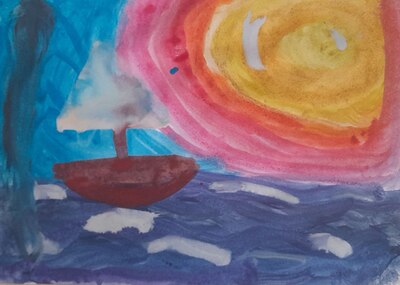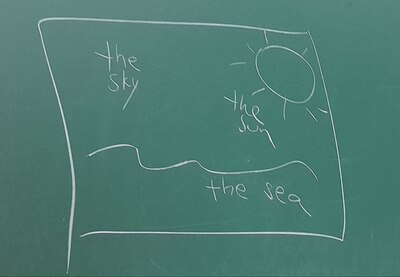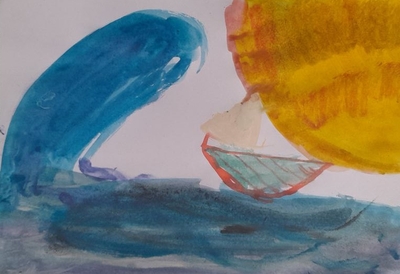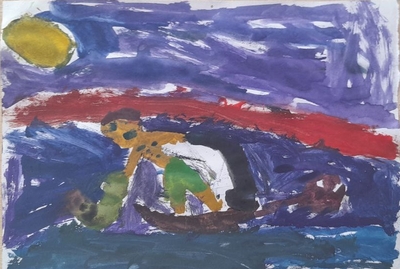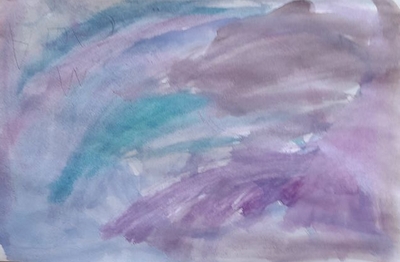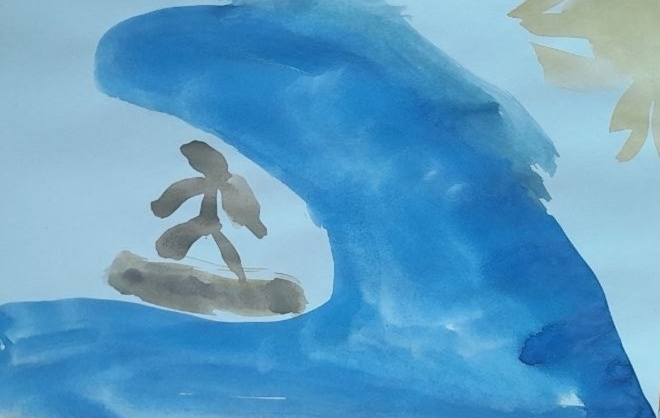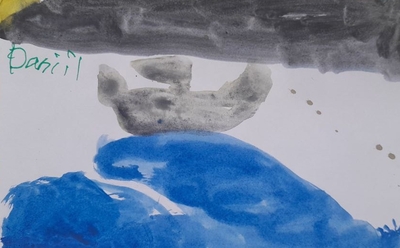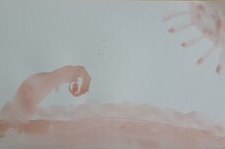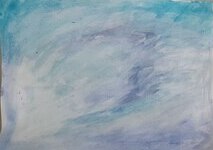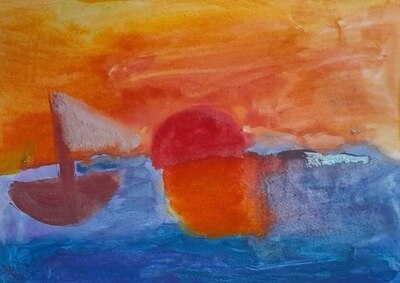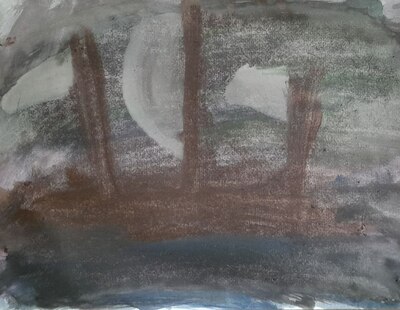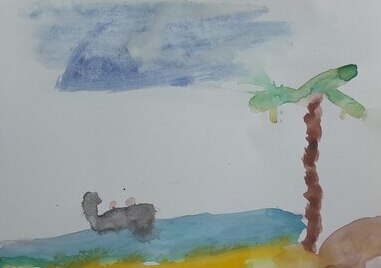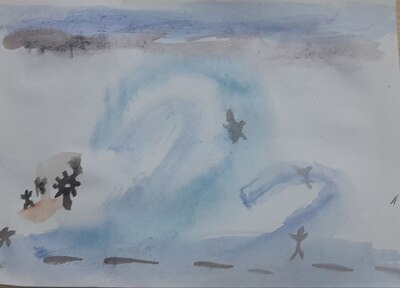
The language
This week was simply a repeat of the previous week’s class, with the only variation being some new sentences in our game (‘What are you doing?’) and a new set of pictures for the presentation and this time we used the famous paintings. This stage of the lesson was relatively short but that is because the artist would make a proper entrance.
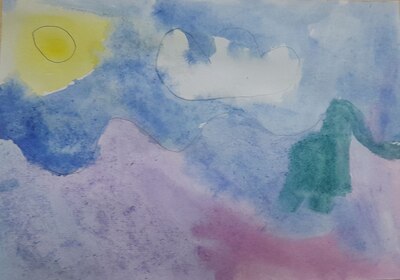
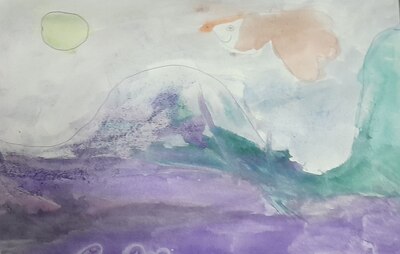
The artist
The guest and the Artist of the Day was J.M.W. Turner who visited in the past. I decided to bring him back because he felt perfect as a representation of movement through a very simple medium of the sea and the clouds.
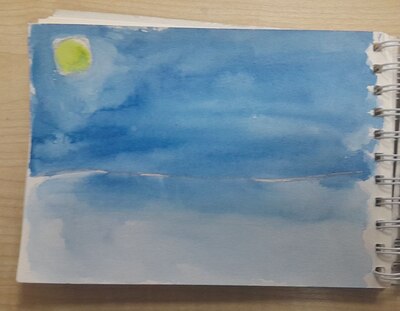
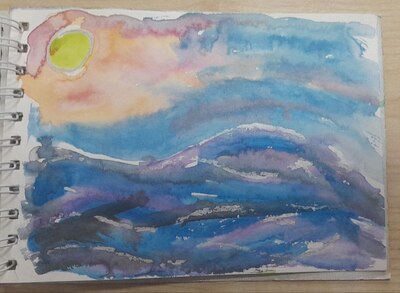
Normally, the stage in which I show the kids my model happens a bit later in the lesson, just before we start creating. In this particular lesson, however, I changed the order and before revealing who the artist was I presented my two paintings: the seascape painted practically with one colour and almost with no lines and the other one with plenty of colours and plenty of lines. This was to demonstrate the difference and to encourage my students to use these two basic tools later on in the lesson. I also asked the kids which one they liked more. (Unsurprisingly, the second one, for the majority of students but there were some who liked the peace and quiet of the first one, too!)
Afterwards, we looked at some of the paintings created by Turner and how he tried to depict the movement in them. It happened almost naturally that they started to express their opinion (‘It is beautiful’, ‘It is scary’, etc).
You can find the presentation we used here.
Here you can find a very interesting article about the movement in art.
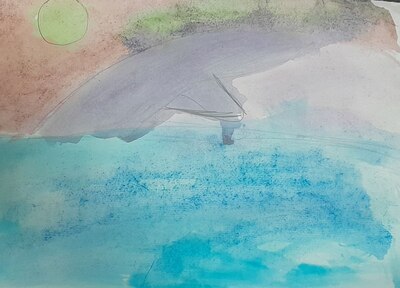
The art
Last week we worked with watercolours and the task was ridiculously simple: draw the sun, the sky and the water (just like Turner did!) and try to show the movement using the colours and the lines.
This was a day of surprises in the classroom and here is the list of the things that surprised me most:
- how easy it is to create a beautiful seascape, even for the artists who are only five or six or eight
- how touching are all the images the children created
- how involved all of my students got into the task despite the fact that we are a mix bunch and there are some who love art and creating and those who don’t really do it very frequently
- how they approached the task and how they adapted it to their own needs and perspectives, by adding human figures or animals or boats to accentuate the movement, by changing the setting and visualising movement in nature in the mountains or in the fields and how proud they were of their works
- how easy it was for them to experiment with the colours, the lines and the settings
- how un-coincidental all the decisions were. And I know it because I could hear what they were talking about while they were working.
- how they enjoyed the task
- how the youngest artist painted a very calm and uneventful sea but then decided to experiment with the materials and his sky was, in fact, created with the wheels of the toy car, resulting in thin black clouds
- and how the other young artist, almost as young, but attending our classes since September, has shown a lot more maturity and understanding of the task (though I love both pictures!)
- how two of them decided to change the settings and go for the mountains instead
- how one of my older students found a new passion for colour and for experimenting with mixing different shades and colours
- how one of my most talented just went for a huge, uncontrollable cloud, a hurricane almost
- how this most precious picture was created by one of my students, two days after the lesson, just because we have found the van Gogh background in the stack of the recycled paper. How the real artist saw the movement in the clouds and how the transformed the sky into the sea because the idea lingered…
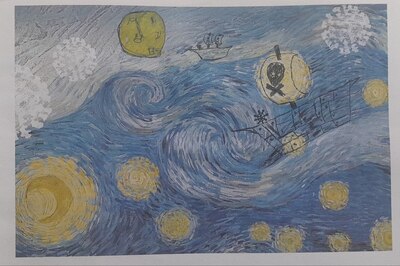
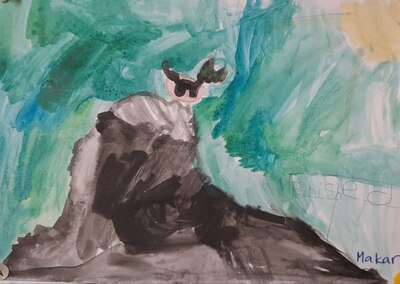
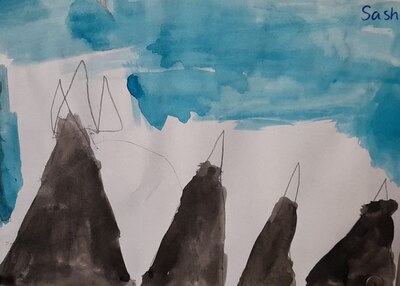
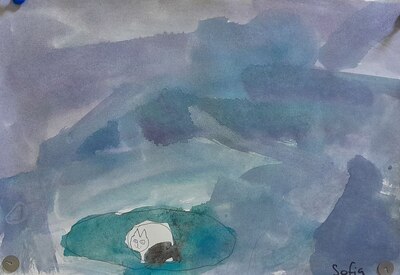
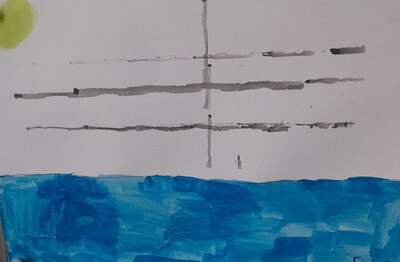
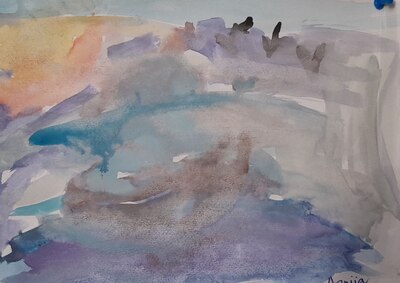
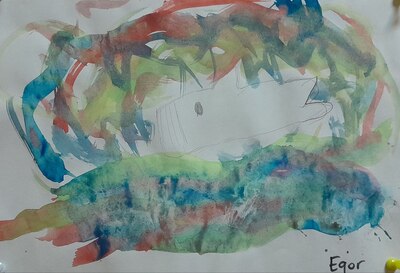
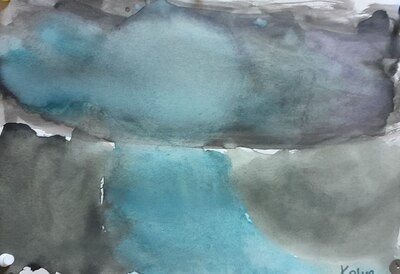
Happy teaching!
